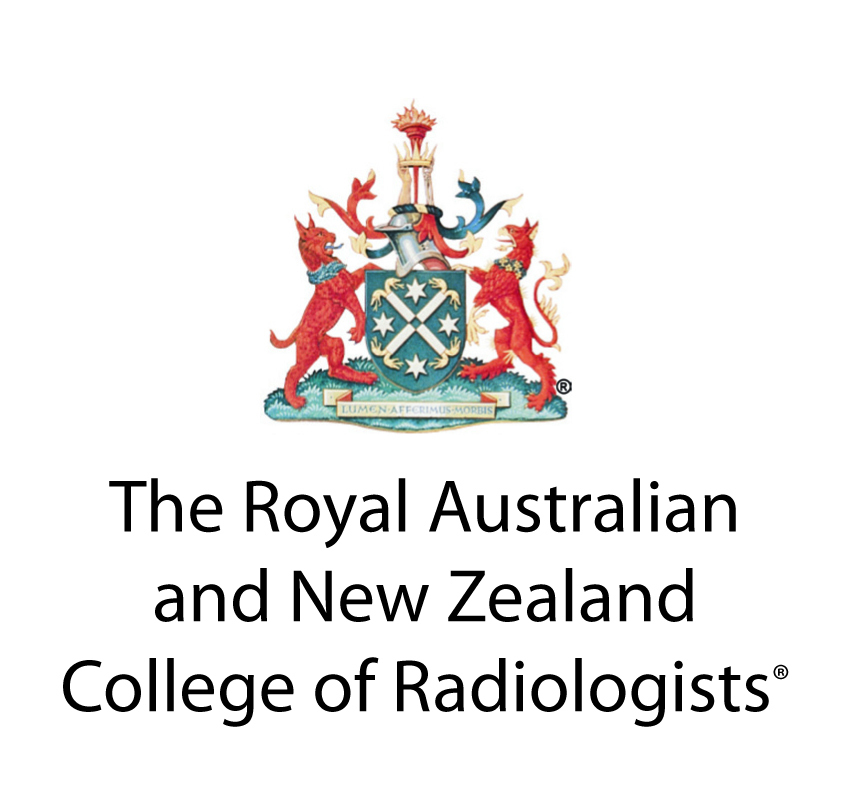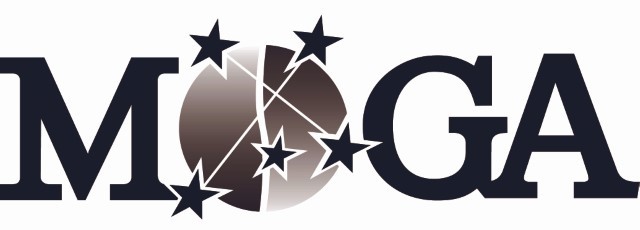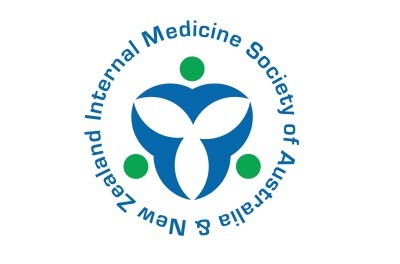Recommendations
Tests, treatments, and procedures for healthcare providers and consumers to question
Australia's peak health professional colleges, societies and associations have developed lists of recommendations of the tests, treatments, and procedures that healthcare providers and consumers should question.
Each recommendation is based on the latest available evidence. Importantly, they are not prescriptive but are intended as guidance to start a conversation about what is appropriate and necessary.
As each situation is unique, healthcare providers and consumers should use the recommendations to collaboratively formulate an appropriate healthcare plan together.
Computed tomography (CT) scan
The Royal Australian and New Zealand College of Radiologists
Visit page
- Don’t routinely use more than one fraction for palliation of non-complex bone metastases.
- Don't request imaging of the cervical spine in trauma patients, unless indicated by a validated clinical decision rule.
- Don’t request computed tomography (CT) head scans in patients with a head injury, unless indicated by a validated clinical decision rule.
Clinical radiology recommendations 1-6 (April 2015)
A team of five Lead Radiologists were nominated to guide RANZCR's Choosing Wisely contribution. These Lead Radiologists analysed previous work completed by RANZCR, in particular a series of Education Modules for Appropriate Imaging Referrals.
These modules had been developed from an extensive evidence base and with multiple stakeholder input. Using the evidence from the Education Modules, the Lead Radiologists developed a draft recommendations list, which was then further developed and endorsed by RANZCR's Quality and Safety Committee, before being circulated to the RANZCR membership for consultation with a request for alternative recommendations. Member feedback was reviewed by the Lead Radiologists prior to ratification of the final recommendations by the Faculty of Clinical Radiology Council. The final six items selected were those that were felt to meet the goals of Choosing Wisely, i.e. those which are frequently requested or which might expose patients to unnecessary radiation.
Due to the fundamental role of diagnostic imaging in supporting diagnosis across the healthcare system, RANZCR worked closely with other Colleges throughout the project via the Advisory Panel. Following identification of two common recommendations with the Australasian College for Emergency Medicine, it was agreed by both Colleges to present these items jointly.
Radiation oncology recommendations 7-10 (September 2021)
Recommendations relating to radiation oncology from the Choosing Wisely and Choosing Wisely Canada were circulated around the Faculty of Radiation Oncology Council to determine which recommendations were applicable to the Australian and New Zealand context. The selected recommendations were then put to the Quality Improvement and Economics and Workforce Committees, with each being asked to rank the recommendations. The five highest ranked recommendations were then put to the radiation oncology membership for consultation prior to being formally approved by the Faculty of Radiation Oncology Council. Recommendations 7-10 are adapted from the American Society for Radiation Oncology (ASTRO) 2013 and 2014 lists. Recommendation 11 is adapted from Choosing Wisely Canada’s Oncology list. Each organisation was approached for—and subsequently granted—approval to adapt these recommendations as part of the Choosing Wisely Australia campaign.
This initial list has now been reviewed with recommendations 7, 8 & 10 remaining unchanged, recommendation 9 has been updated based on the advice of the Faculty of Radiation Oncology Quality Improvement Committee and Recommendation 11 has been replaced based on the feedback of the Quality Improvement Committee and the Policy and Advocacy team.
The Australian Physiotherapy Association
Visit page
The APA sought nominations from fellows and associates of the Australian College of Physiotherapy, directors of the Physiotherapy Evidence Database, clinical specialist APA members and academic physiotherapists to form an expert panel. The APA invited all members to submit evidence about interventions related to physiotherapy that should be questioned. From members’ submissions and the expert group’s research, the expert group formed a shortlist of 8 recommendations. The expert group then considered the shortlist in terms of the extent of the health problem, usage of the test or intervention, and the evidence that the test or intervention is inappropriate. From this analysis, the expert panel selected five recommendations to put to APA members. In a second round of consultation, the APA received nearly 2500 responses, and almost 900 comments. The expert panel then considered feedback and refined the recommendations. This resulted in the 6 recommendations put forward below, for which there was overwhelming majority support.
The Australia and New Zealand Child Neurology Society
Visit page
Following deliberations, the ANZCNS Board determined to investigate the evidence for nine priority recommendations regarding low-value clinical practices in paediatric neurology. An evidence review was developed for these recommendations and served as the basis for an online survey sent to all ANZCNS members asking respondents if they agreed, disagreed or were unsure if these recommendations were evidence based, undertaken in significant numbers, and important in terms of reducing patient harm and unnecessary healthcare expenditure. Based on survey responses, each of the nine was assigned a score and ranked accordingly. Based on this information and a final evidence review, these top 5 recommendations were chosen.
Royal Australasian College of Surgeons
Visit page
- Don’t obtain computed tomography (CT) or magnetic resonance imaging (MRI) in patients with a primary complaint of hoarseness prior to examining the larynx.
- Don’t routinely obtain radiographic imaging for patients who meet diagnostic criteria for uncomplicated acute rhinosinusitis.
- Don’t do computed tomography (CT) for the evaluation of suspected appendicitis in children and young adults until after ultrasound has been considered as an option.
- Don’t order computed tomography (CT) scan of the head/brain for sudden hearing loss.
RACS collaborated with General Surgeons Australia (GSA) and the Australian Society of Otolaryngology Head and Neck Surgery (ASOHNS) respectively on the development of lists for Choosing Wisely Australia. Each organisation worked closely with key members including the Sustainability in Healthcare Committee and Professional Development and Standards Board (RACS), and the Boards of Directors (GSA and ASOHNS) to develop the lists of tests/treatments/procedures for general surgery, and head and neck surgery.
Medical Oncology Group of Australia
Visit page
An Evolve working group of MOGA members was established and compiled an initial list of 79 potentially low-value tests, treatments, and other clinical practices in medical oncology, drawing on the results of a desktop review and clinical experience. Anonymised email feedback on the list was collated and analysed and the initial list was reduced to 64 items. These were divided into seven categories, ranging from ‘Diagnosis and staging’ to ‘Therapy’. An online survey allowed members of the working group to anonymously choose the top six or the top three from each category (depending on the number in the category). From this, a list of the top-28 items was then presented to the MOGA Executive Committee. Following anonymised email feedback, this list was further reduced to 24 items. Each member of the Committee was invited to nominate their top-12 of these. Responses were consolidated and a list of 11 items compiled, which served as the basis of a final online survey, to which the entire MOGA membership was invited to respond. Respondents assigned a score of 1 to 5 for each item based on their level of agreement with each. Scores for each item were averaged and the top-5 list produced.
Internal Medicine Society of Australia and New Zealand
Visit page
A panel of IMSANZ members produced an initial list of 32 low value tests, treatments and management decisions frequently encountered in general medicine services. This initial list was distributed via e-mail to 350 members of a working group comprising approximately 50 general physicians as well as nurses and allied health professionals who ranked the items in terms of priority and were free to nominate additional items. Based on their responses, the list was condensed to 15 items including three which were not previously listed. These 15 items were the subject of a face-to-face forum of the working group which reached consensus on a final list of 10.
Recommendations on ‘what not to do’ were formulated around these 10 items and a summary of the evidence for each recommendation was prepared. An online survey based on this work was presented to, and approved by, IMSANZ Council. The survey was sent to all IMSANZ members asking respondents to assign a score from 1 to 5 for each recommendation on three criteria: ‘The clinical practice being targeted by this recommendation is still being undertaken in significant numbers’; ‘This recommendation is evidence-based’; and ‘This recommendation is important in terms of reducing harm to patients and/or costs to the healthcare system’. The survey attracted 182 respondents from all across Australia and New Zealand, which was a response rate of 26%. The final top five chosen were the recommendations with the five highest average total scores assigned to them.
Haematology Society of Australia and New Zealand
Visit page
- Do not perform baseline or routine surveillance CT scans or bone marrow biopsy in patients with asymptomatic early stage chronic lymphocytic leukaemia (CLL)
- Limit surveillance computed tomography (CT) scans in asymptomatic patients with confirmed complete remission following curative intent treatment for aggressive lymphoma – except for patients on a clinical trial
The Haematology Society of Australia and New Zealand (HSANZ) council, which includes 9 state representatives, convened to form the working group to produce a ‘top 5’ list for haematology.
Drawing on the list produced by the American and Canadian Societies of Haematology, the working group compiled a list of 5 clinical practices in haematology which may be overused, inappropriate or of limited effectiveness in a given clinical context.
This list was then sent out to all HSANZ members seeking feedback on whether these items fully captured the concerns of clinicians in an Australasian haematology medicine context and if not, whether any items should be omitted and/or new items added.
The criteria used to rate the practices were strength of evidence, significance in haematology and whether haematologists could make a difference in influencing the incidence of the practice in question.
Feedback on the items and the recommendations was received from 11 institutional haematology departments (following intradepartmental consultation) as well as an additional 10 individuals.
Based on these responses, the top 5 items were selected and finalised.
Australasian College for Emergency Medicine
Visit page
- Don’t request imaging of the cervical spine in trauma patients, unless indicated by a validated clinical decision rule.
- Don’t request computed tomography (CT) head scans in patients with a head injury, unless indicated by a validated clinical decision rule.
Avoid requesting computed tomography (CT) imaging of kidneys, ureters and bladder (KUB) in otherwise healthy emergency department patients, age <50 years, with a known history of kidney stones, presenting with symptoms and signs consistent with uncomplicated renal colic.
A Choosing Wisely Working Group of 9 emergency physicians identified an initial list of 10 potential items. All ACEM members were able to provide feedback on these items and suggest other issues for consideration. This feedback informed Working Group refinement of the initial list into 8 recommendations. Evidence reviews were then completed for each recommendation. These evidence reviews, frequency of use in ED, risks/benefit to patient and cost were used as criteria for Working Group member voting in order to determine the final 6 recommendations. These recommendations have been endorsed by ACEM's Council of Advocacy, Practice and Partnerships.
Following identification of two common recommendations with the Royal Australian and New Zealand College of Radiologists, it was agreed by both Colleges to jointly present these items.